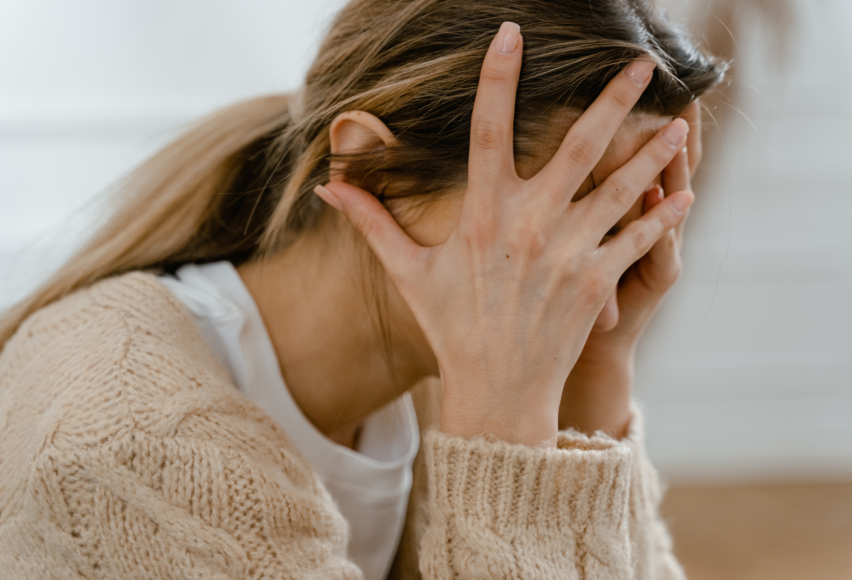From Comfort to Consequence: Why Skin Picking Feels Good (But Isn’t)

Online test
Find out the severity of your symptoms with this free online test
While it may seem like simply a “bad habit” to an outsider, for those living with skin picking, it’s a mental health disorder that creates a vicious cycle of momentary relief followed by feelings of guilt and shame, along with damage to the skin.
It’s not uncommon for people to ask, “why can’t you just stop?” (If it was that easy, they would.) The problem is that skin picking is more than skin deep. Research has found that it is deeply rooted in the brain’s reward system. Understanding the science behind this behavior is the first step toward disrupting the cycle and finding healthier ways to cope.
The Brain’s Reward System and Skin Picking
The brain’s reward system is a complex circuit that evolved to reinforce behaviors that are essential to survival like eating, reproducing, and even socializing. It’s one of the evolutionary factors that kept our ancestors alive. By releasing dopamine, a neurotransmitter associated with pleasure and motivation, behaviors are reinforced. For example, when you eat your favorite food or accomplish a goal, your brain is flooded with dopamine, creating an intense feeling of satisfaction, increasing the likelihood of repeating the behavior. In the modern day, this reward circuit is still critical but is easily overstimulated by the seemingly endless opportunities for rewards.
So, what does this have to do with skin picking?
Skin picking taps into this same reward pathway. Brain imaging studies using functional MRI scans have shown heightened activity in the reward-related regions of the brain during repetitive behaviors like skin picking, not unlike patterns seen in addiction. Other research supports these findings, and suggest that the rewarding nature of skin picking suggests some component of addiction.
Areas of the brain responsible for impulse control and decision-making also play a role in this downward spiral. Studies have found that people with skin picking disorder tend to have an impaired stop-signal inhibitory control meaning they have a harder time controlling their behavior or knowing when to stop (greater impairment of inhibitory control). Over time, that cycle becomes entrenched making it harder to break free.
So, skin picking feels good? It’s complicated.
In general, we tend to gravitate towards what is pleasurable and avoid what is painful. However, for people with skin picking disorder, that doesn’t seem to always be true. Just why someone picks their skin to the point of pain and injury isn’t well understood. It is thought that picking serves to alleviate emotional distress that often precedes picking. In that way, the picking may be perceived as pleasurable despite the pain of picking.
It’s true that some people experience intense craving and pleasure from picking. Several studies suggest that this experience may be due in part to dysfunction in the reward processing system. Some research suggests that people with skin picking disorder may perceive touch differently as well.
The reward from skin picking is less about pleasure and more about relief. Skin picking often emerges as a coping mechanism for anxiety, boredom, or tension. The act of picking brings temporary relief from this emotional distress, reinforcing the idea that the picking is the “solution”. temporarily relieves these emotions, reinforcing the picking behavior as a “solution.” So, in that way, picking can feel good…at least for a little while.
Why Feeling Good Really Isn’t So Good
While the short-term reward of picking – alleviating the emotional tension - feels good, the long-term consequences are far less kind.
Repeated skin picking can lead to infections, scarring, and chronic pain as well as significant emotional distress and impaired psychosocial functioning. People with skin picking often also have co-occurring issues like depression or anxiety. Social connections can become impaired due to avoidance. Relationships can be impacted. The list goes on.
The good news is, you can disrupt the cycle of picking and you can find more healthy ways to cope.
Breaking the Cycle
As with any behavior, it takes time to change. While not an overnight fix, several evidence-based strategies can disrupt the picking cycle and reduce the behavior over time:
- Replace the Reward: A pillar of Habit Reversal Training (HRT) substituting picking with a competing behavior can short-circuit the loop and provide the relief you seek. Fidget toys, stress balls, or even textured objects can engage the hands and provide sensory input without causing harm. The goal is to redirect the reward to a healthier action, gradually weakening the association between picking and relief.
- Mindfulness and Awareness: Mindfulness techniques, like meditation or body scans, can enhance self-regulation. By learning to “notice” the urge to pick without acting on it, the brain learns that the urge doesn’t need to be obeyed, weakening the pathway over time.
- Habit Reversal Training (HRT): HRT, a specialized form of cognitive behavioral therapy, is one of the most effective treatments for skin picking. HRT helps you identify triggers, learn alternative responses, and reframe the thoughts that fuel your behavior, strengthening your ability to manage your actions.
- Stress Management: Since skin picking often stems from emotional distress, lowering stress levels can help decrease urges and promote relaxation, giving the reward system less opportunity to activate.
- Therapy: Therapy can help you to understand your skin picking and find healthy strategies for coping with it. As you gain skill in managing your triggers and urges, you are strengthening your decision-making skills too. There are a number of evidence-based approaches used to treat skin picking.
Moving Forward
Skin picking’s grip on the brain’s reward system explains why it’s so hard to stop: it feels good in the moment, even as it harms in the long run. When you understand why something happens, you can take action to disrupt the cycle and being healing. With persistence, the brain’s plasticity allows it to rewire those pathways, trading temporary relief for lasting healing.
References
1. Grant, J.E., Peris, T.S., Ricketts, E.J. et al. (2022). Reward processing in trichotillomania and skin picking disorder. Brain Imaging and Behavior 16, 547–556. https://link.springer.com/article/10.1007/s11682-021-00533-5#citeas
2. Schienle, A. (2025). The clinical phenomenology of skin-picking disorder – Are there any obsessive-compulsive components? Comprehensive Psychiatry, 138, 152575. https://www.sciencedirect.com/science/article/pii/S0010440X25000021
3. Grant, J. E., Leppink, E., & Chamberlain, S. (2015). Body focused repetitive behavior disorders and perceived stress: Clinical and cognitive associations. Journal of Obsessive-Compulsive and Related Disorders, 5, 82–86. https://doi.org/10.1016/j.jocrd.2015.02.001
4. Roos, A., Grant, J. E., Fouche, J. P., Stein, D. J., & Lochner, C. (2015). A comparison of brain volume and cortical thickness in excoriation (skin picking) disorder and trichotillomania (hair pulling disorder) in women. Behavioural brain research, 279, 255–258. https://pubmed.ncbi.nlm.nih.gov/25435313/
5. Schienle, A., Übel, S., & Wabnegger, A. (2018). Neuronal responses to the scratching and caressing of one's own skin in patients with skin-picking disorder. Human brain mapping, 39(3), 1263–1269. https://pubmed.ncbi.nlm.nih.gov/29218753/
Online test
Find out the severity of your symptoms with this free online test
Start your journey with SkinPick
Take control of your life and find freedom from skin picking through professional therapy and evidence-based behavioral techniques.
Start Now



